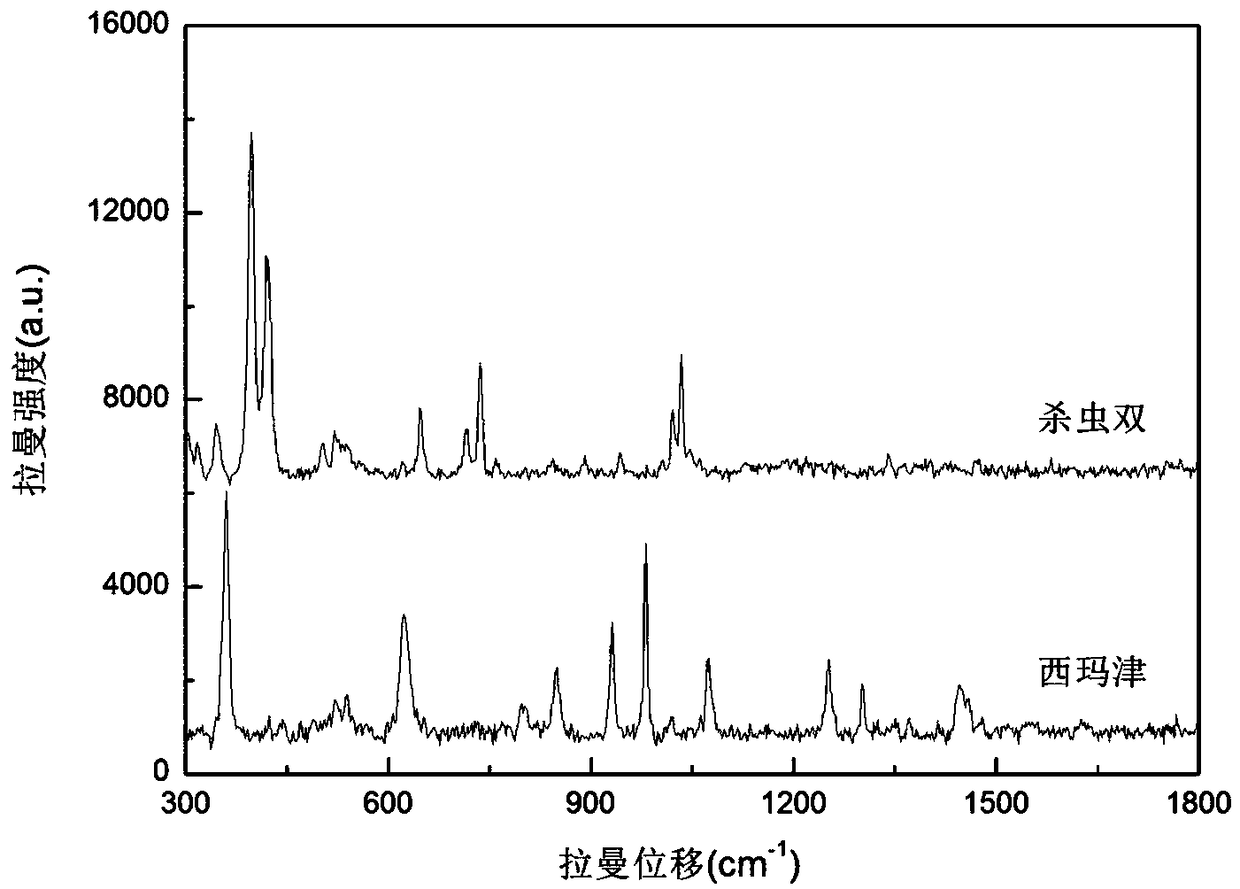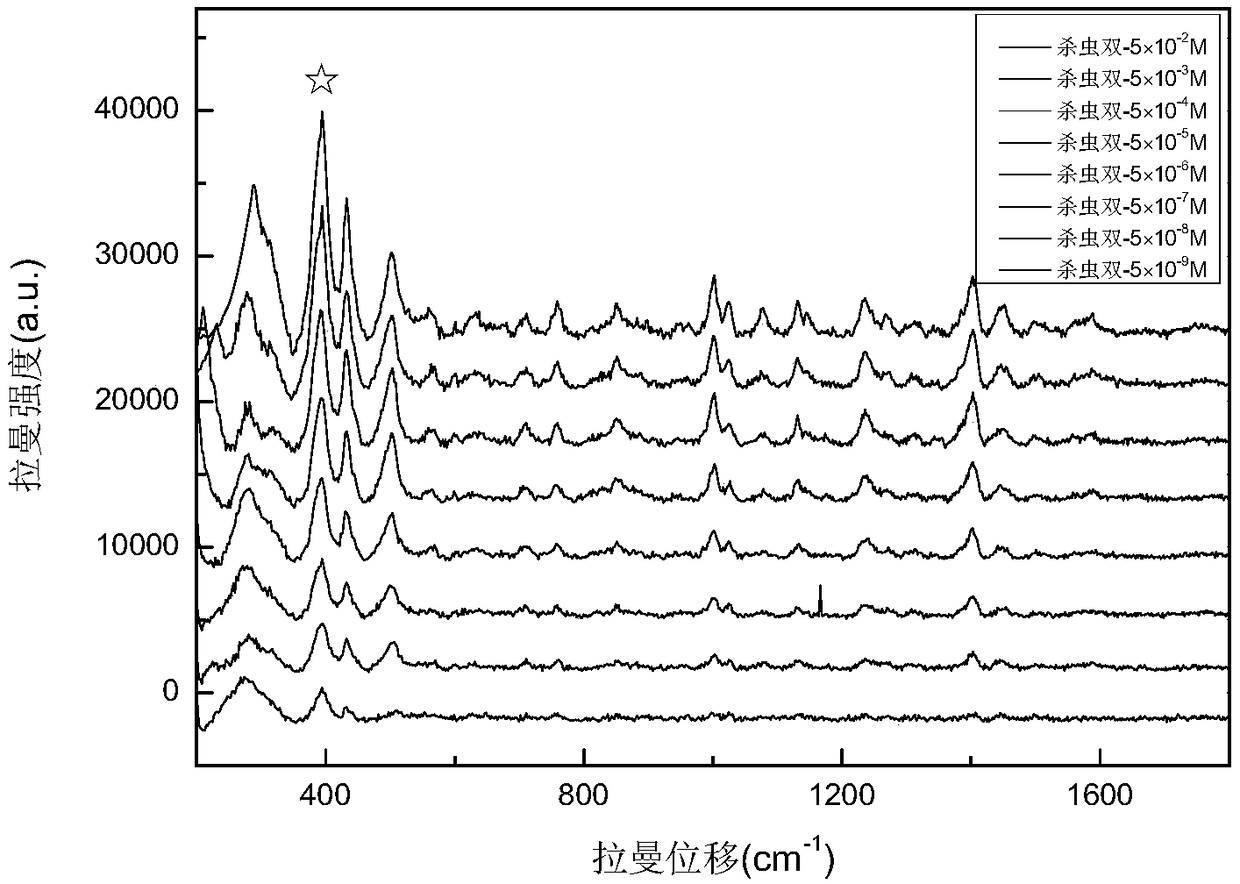Method for rapid detection of dimehypo and simazine in tea on site
A tea, on-site technology, applied in the field of rapid on-site detection of insecticide and simazine in tea, can solve the problems of selectivity, time-consuming, poor specificity, low sensitivity, etc., and achieves simple operation, easy handling and improved detection sensitivity. Effect
- Summary
- Abstract
- Description
- Claims
- Application Information
AI Technical Summary
Problems solved by technology
Method used
Image
Examples
Embodiment 1
[0028] Example 1: PAD-SERS technology detects dimehypo and simazine
[0029] (1) Preparation of silver ammonia solution
[0030] Take 2mL of 0.01moL / L silver nitrate solution in a test tube, add 100μL of 0.1moL / L sodium hydroxide aqueous solution, shake to produce a light yellow precipitate; drop 80μL of dilute ammonia (0.5moL / L) until the initial The precipitate just dissolved, the silver ammonia solution obtained;
[0031] (2) Construct an analysis device based on PAD
[0032] The paper used in the experiment is 0.22μm cellulose-based filter paper (PC, Whatman), and the device used is a sand core suction filter device. Take 2 mL of the silver ammonia solution in step (1), and use the sand core suction device to filter on the filter paper by vacuum filtration. After the suction filtration was completed, air-dried in a laminar flow cabinet for 30 minutes to obtain a filter paper containing silver ammonia solution. Cut the filter paper into 0.5×2cm strips for use;
[0033] (3) Prepar...
Embodiment 2
[0040] Example 2: Detection of dimehypo and simazine in tea
[0041] Figure 7 A flow chart of dimehypo and simazine in tea according to an embodiment of the present invention is schematically given, and the detection method includes the following steps:
[0042] (1) Prepare silver ammonia solution, the steps are the same as in Example 1;
[0043] (2) Construct an analysis device based on PAD, the steps are the same as in Example 1;
[0044] (3) Prepare silver nanoparticles (Ag NPs) paper chips by silver mirror reaction, the steps are the same as in Example 1;
[0045] (4) The paper chip is wiped on the surface of the sample containing dimehypo and simazine, and the steps are the same as in Example 1;
[0046] (5) SERS detects dimehypo and simazine in tea.
[0047] The tea sample used in the laboratory is Hangzhou West Lake Longjing tea. Take the silver nanoparticle (Ag NPs) paper chip in step (3) to wipe the surface of Longjing tea for 2 minutes, and use a portable Raman spectrometer to...
PUM
 Login to View More
Login to View More Abstract
Description
Claims
Application Information
 Login to View More
Login to View More - R&D
- Intellectual Property
- Life Sciences
- Materials
- Tech Scout
- Unparalleled Data Quality
- Higher Quality Content
- 60% Fewer Hallucinations
Browse by: Latest US Patents, China's latest patents, Technical Efficacy Thesaurus, Application Domain, Technology Topic, Popular Technical Reports.
© 2025 PatSnap. All rights reserved.Legal|Privacy policy|Modern Slavery Act Transparency Statement|Sitemap|About US| Contact US: help@patsnap.com



